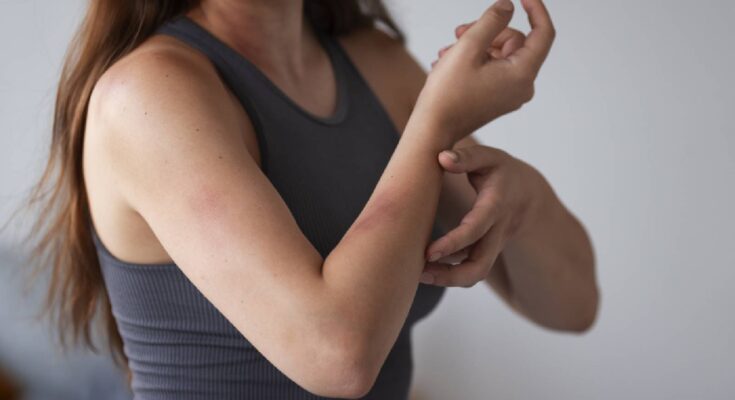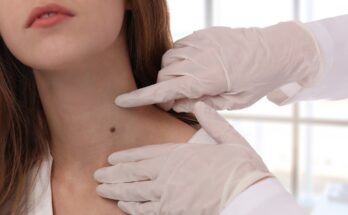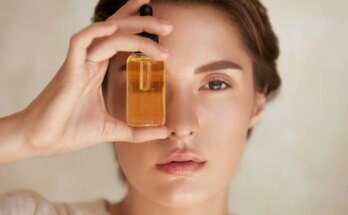Skin lesions is an abnormal area of skin on your body. These can be in the form of blisters, cuts, rashes or boils.
Have you noticed any areas on your body where your skin looks abnormal, or different from the skin around the area? These are skin lesion, they can be caused due to a number of factors such as infections, eczemas or other tumours. While some skin lesions may look like scars, others may have boils, hives and blisters. Some lesions may even result in some rashes or freckles.
What are skin lesions?
Any areas of skin that are abnormal and do not look like the surrounding normal skin are called skin lesions. It may be due to many reasons such as infections, tumours, eczemas, or other causes, explains dermatologist Dr Sachith Abraham..
Types of skin lesions
There are many kinds of infections, allergies, tumours and eczemas that can result in skin lesions. Some of them have been listed below:
1. Bacterial, viral, or fungal infections
The examples of these include boils, impetigo, warts, cold sores, and ringworm. These can be treated by antibiotics, antiviral medications, or antifungal drugs.
2. Eczema, or dermatitis
This is an inflammatory skin condition and often involves redness, itching, and the formation of blisters or rashes. Topical corticosteroids, and antihistamines may be used to manage symptoms.

3. Psoriasis
Psoriasis is a chronic autoimmune condition characterized by the rapid buildup of skin cells. This results in thick, silvery scales and red patches on the skin. Topical steroids, phototherapy, and systemic medications are common treatments.
4. Allergic reactions
This can lead to skin lesions as well. You can have hives, redness, itching, and sometimes blistering. Identifying and avoiding allergens is crucial. Antihistamines and topical steroids may be used for relief.
Select Topics of your interest and let us customize your feed.
5. Tumors (Benign or malignant)
Skin lesions can be benign (non-cancerous) or malignant (cancerous). The various examples of these include moles, cysts (benign), or skin cancer (malignant). Surgical removal, chemotherapy, radiation, or immunotherapy, depending on the nature of the tumour.
6. Autoimmune conditions (Lupus):
Autoimmune disorders involve the immune system attacking healthy cells, including skin cells. The symptoms are skin lesions, rashes, and systemic symptoms. Immunosuppressive medications and anti-inflammatory drugs may be prescribed.
7. Hereditary conditions
Genetic disorders affect the skin, such as epidermolysis bullosa or ichthyosis. This may result in abnormal skin development, blistering, or scaling. Management involves symptomatic relief and supportive care, as specific treatments may vary.
7. Normal skin variations
Certain skin lesions can be a result of normal variations in skin appearance. The examples of these include birthmarks, freckles, or moles. Monitoring for changes and, if necessary, removal for cosmetic or medical reasons, is required in this case.
Also Read: 5 signs your skin is crying out for hydration
What are the different kinds of primary and secondary skin lesions?
Primary skin lesions are as follows:
1. Macule
Macule, a small, flat, and discoloured area of the skin. The examples include Freckles, flat moles, or petechiae (small red or purple spots due to bleeding under the skin).
2. Papule
Papule, a raised, solid bump on the skin. These are acne lesions, warts or insect bites.
3. Plaques
Plaques, large, raised, and flat-topped areas on the skin. Psoriasis lesions are often plaques, appearing as thickened and scaly patches.
4. Nodules
Nodules, solid, raised lesions that extend deeper into the skin. These are larger cysts, lipomas, or certain types of skin tumours.
5. Vesicles
Vesicles, small, fluid-filled blisters on the skin. The examples of these include chickenpox blisters, herpes simplex blisters, or poison ivy rash.
6. Bullae
Bullae, larger fluid-filled blisters on the skin. These are second-degree burns, and blistering in autoimmune disorders like pemphigus.
7. Pustules
Pustules, small, pus-filled lesions on the skin. Acne pustules, impetigo, or some types of folliculitis all come in this category.

Secondary skin lesions are as follows:
1. Scaling
Scaling refers to the presence of visible flakes or dry, dead skin cells on the skin’s surface. Psoriasis often presents with scaling, as well as conditions like seborrheic dermatitis.
2. Crusting
Crusting occurs when dried serum, blood, or other fluids form a crust on the surface of a skin lesion. Impetigo, a bacterial skin infection, often results in honey-coloured crusts.
3. Erosions
Erosions are shallow areas of skin loss that do not penetrate through the full thickness of the skin. Erosions can be seen in conditions like contact dermatitis or after the rupture of a blister.
4. Ulcers
Ulcers involve the loss of the full thickness of the skin, extending into the deeper layers. Leg ulcers in venous insufficiency or pressure ulcers (bedsores) are common examples.
5. Fissures
Fissures are deep cracks or linear openings in the skin, extending into the dermis. Fissures commonly occur in conditions like eczema, especially on the hands or feet.
Also Read: From poor mood to pale skin, vitamin C deficiency can lead to all this and more
How to treat skin lesions at home?
Here are some doctor-approved home remedies for you to try!
1. Petroleum jelly is a good home remedy for dry skin and eczema. It can also be used for abrasions
2. Calamine lotion is a good home-use remedy for itchy skin
3. Ice pack can be used for red skin especially on the face
4. Aloe vera gel can also be used to soothe irritated skin
5. Antibiotic creams can be kept at home for cuts and wounds.
However, a visit to the doctor is a must. Any skin lesion causing itching or pain requires evaluation by a dermatologist. What may appear normal to an individual could potentially be a more serious condition.
Source link






